The Best things to do in Purnululu National Park
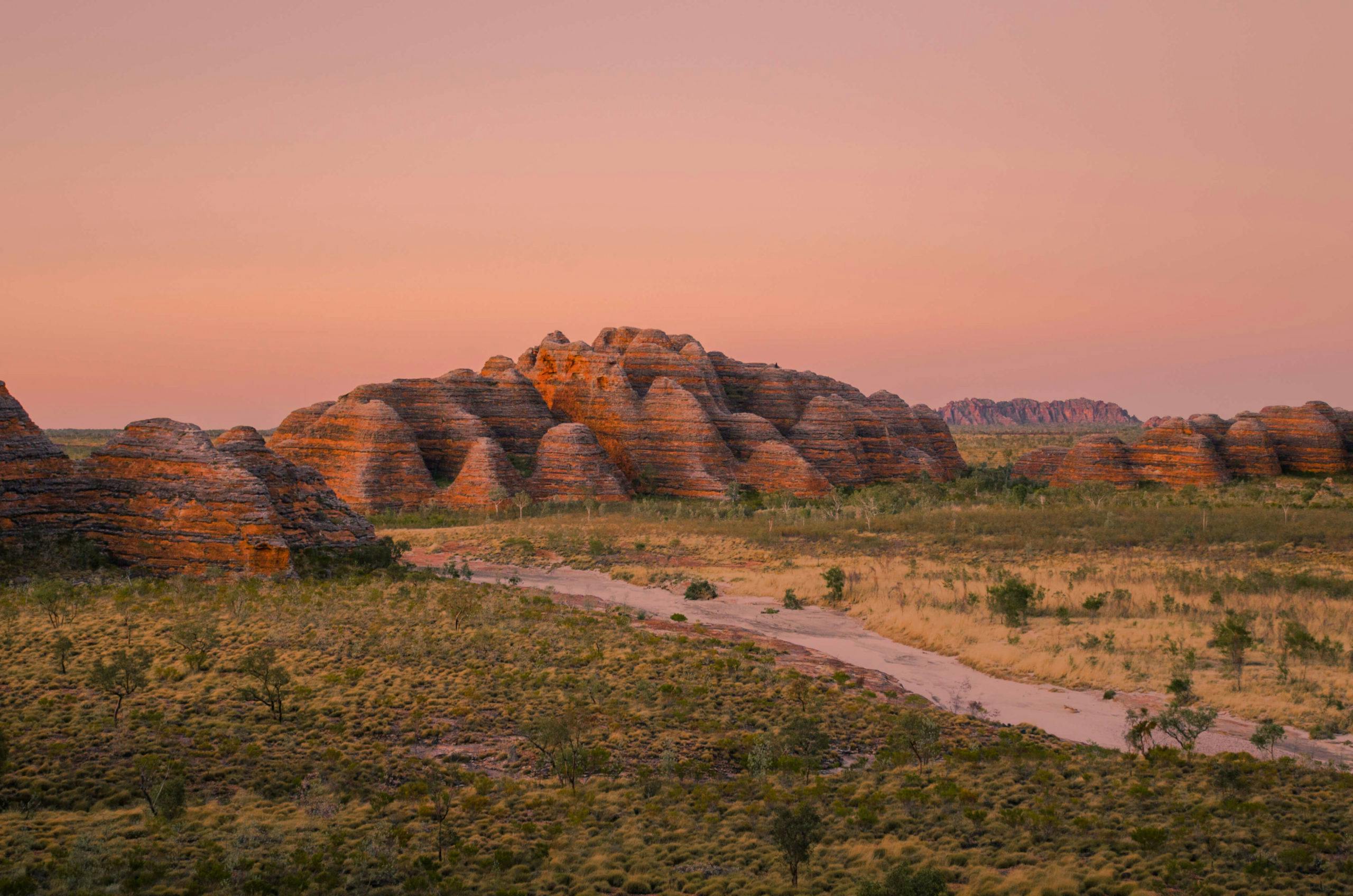
Purnululu National Park (also known as ‘the Bungle Bungles’), is located in the East Kimberley, about 250 kms south of Kununurra and about 100 kms north of Halls Creek. Known for its incredible striped sandstone domes, the national park was established in 1987 and was World Heritage listed in 2003. Access to the park is 4WD only, and while the unsealed access road between the park and the Great Northern Highway is only 52 kms, it’s usually slow going so allow for it to take about 2 hours. But, with incredible gorges and chasms to explore, it’s well worth the visit and is often the highlight of Kimberley trips.
Echidna Chasm
Echidna Chasm, located at the northern side of the park, is 750 metres long and in places less than a metre wide. The best time of the day to visit is when the sun is directly overhead (typically around midday), making the 200 metre high chasm walls glow a deep orange colour. The 2km return walk is well-signed and the trail, made of loose river rocks, gets more challenging towards the end of the chasm requiring you to scramble over or between boulders and up ladders.
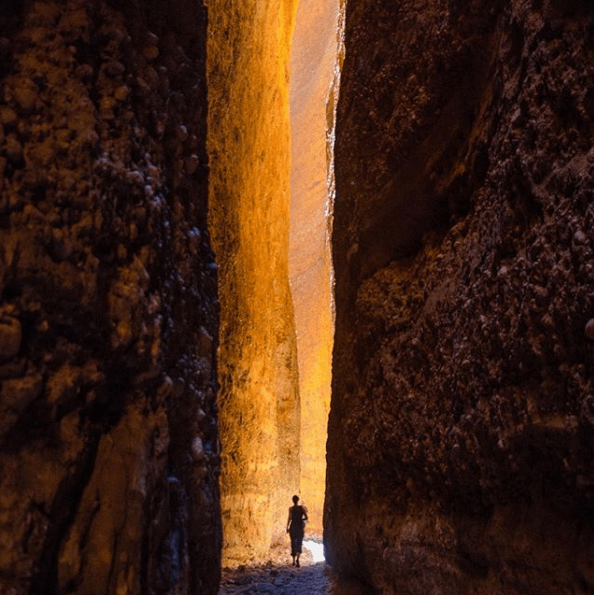
Photo by @alex.vp.photography

The Bungle Bungle Ranges
The most iconic image of Purnululu National Park is the Bungle Bungle Ranges and their striped red and black beehive domes. The domes walk is a very short, easy walk from the southern car park and takes you past these incredible formations. The domes walk connects with the trail to Piccaninny Creek, a dry river bed that winds through the ranges. Also accessible, and worth the detour from Piccaninny Creek, is a lookout, Whip Snake Gorge, and nature’s window.
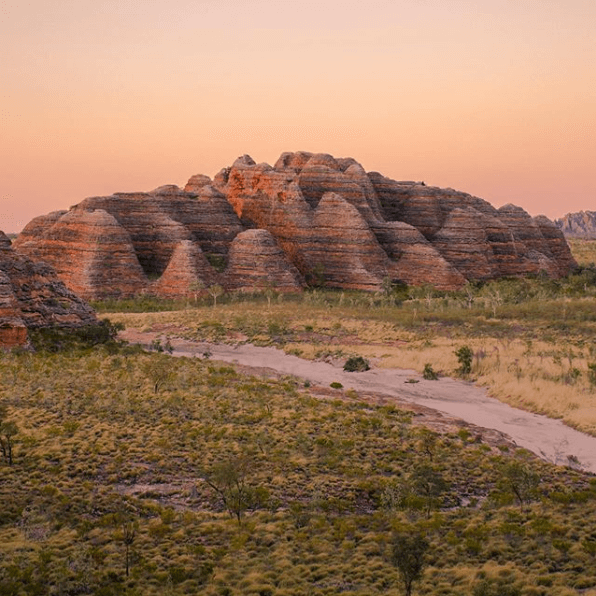
Photo by @alex.vp.photography

Mini Palms Gorge
Located at the northern end of the park is the Mini Palms Gorge trail which starts at the Bloodwoods car park and picnic area. The northern end of the park is very different to the striped domes of the southern end, and the trail, which can be challenging in sections as you scramble over and between boulders, takes you past towering Livistona palms. There are two raised viewing platforms towards the end of the trail, the first offering views over the lush, palm-tree filled valley, and the other into the narrow end of the gorge itself.
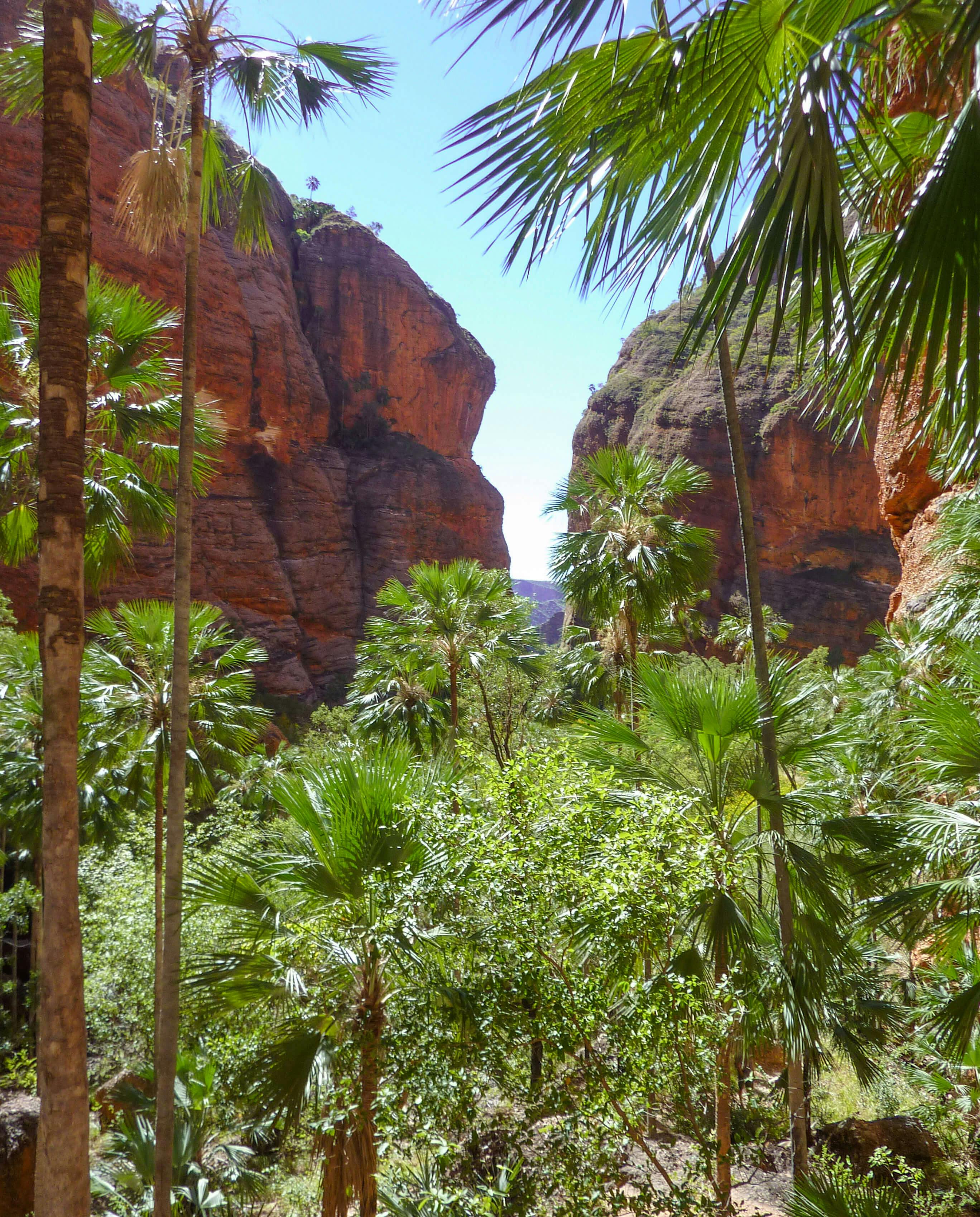
Photo by @alex.vp.photography

Watch a sunset
There are a number of dedicated sunset and sunrise viewing areas in the national park. Kurrajong campground (one of two campsites in the park) has its own sunset viewing area and walking trail. This easy, short (1.2km) trail from the campground is well signposted and offers views from a nearby ridge top. It’s a great spot to end the day with a few drinks while watching the afternoon light on the western wall as the sun sets behind you (just don’t forget your headlamps for the walk back to the campground!).
Subscribe to our free newsletter!
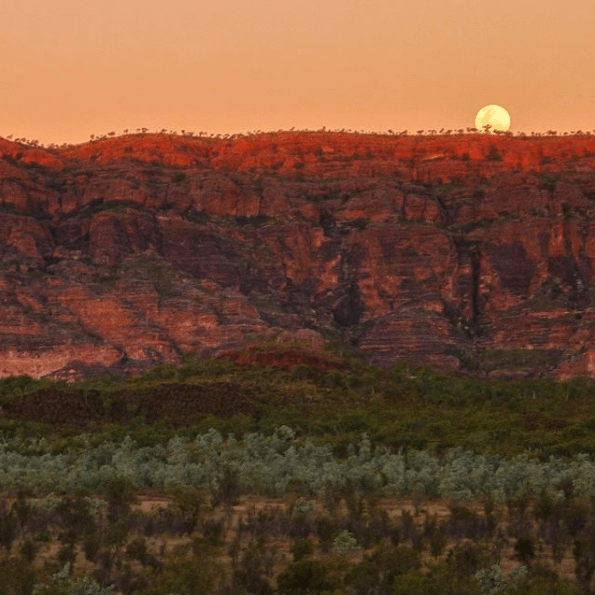
Photo by @alex.vp.photography

Take a scenic flight
The best way to get a true sense of the vast scale of the park, with its hundreds of striped domes, deep gorges and chasms, is from the sky. Scenic flights are run daily in the dry season with departures from the airstrip within the national park. There are also flights available from Kununurra, Warmun and Lake Argyle for those who don’t have 4WD access to the park.
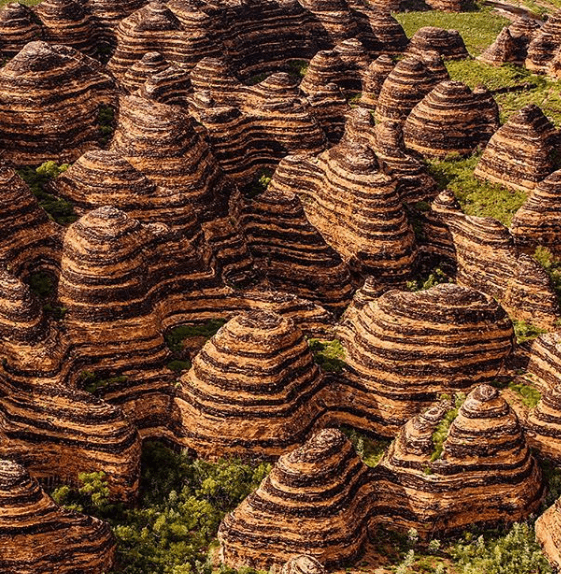
Photo by @seanscottphotography

Cathedral Gorge
Cathedral Gorge is located within the Bungle Bungle Ranges at the southern end of the park. It’s a short 300m walk from Piccaninny Creek through the beehive domes and is one of the easier walks in the park. Carved out by millions of years of erosion by rain in the wet season, the acoustics in this natural amphitheatre are amazing.
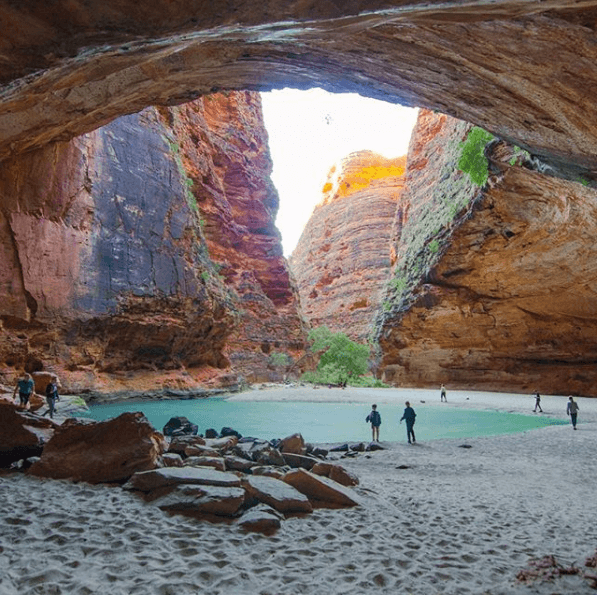
Photo by @alex.vp.photography

Trek into Piccaninny Gorge
Those who are more adventurous or enjoy hiking can trek the length of Piccaninny Gorge. The 30km return walk is a multi-day trek and requires hikers to camp inside the gorge for at least one night. The first 7kms until the gorge entrance is relatively easy and many choose to walk a short section of the trail then return. The trail becomes more challenging for those who continue on and it requires hikers to make their way past loose rocks and fallen boulders without a marked track. Hikers who are planning on camping overnight need to register at the visitor centre before going and after returning.
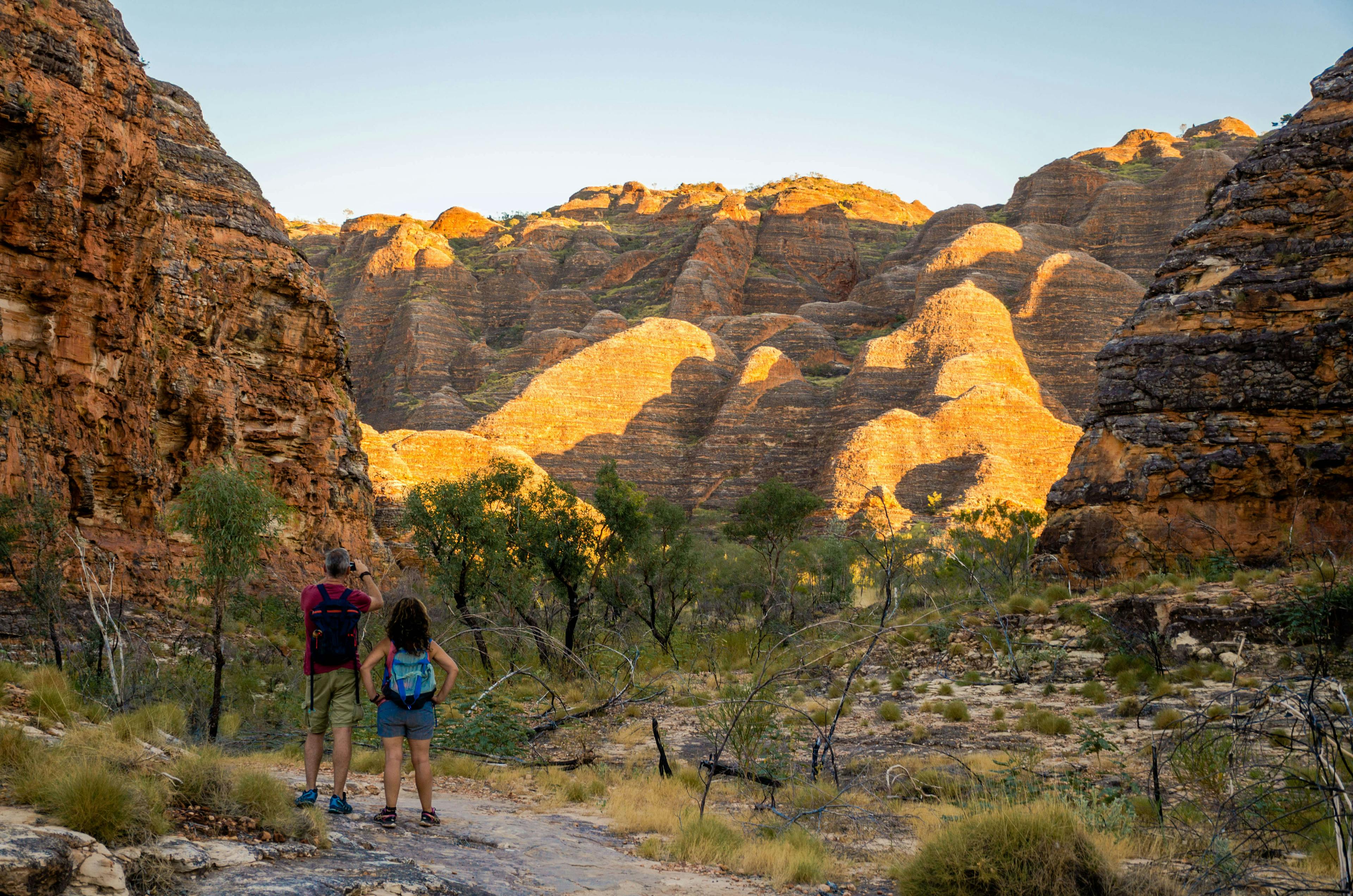
Photo by @alex.vp.photography

Enjoyed this article? Check out these related articles below…
The Best Things to do in Broome
The Best Things to do in Karijini National Park
The Best Things to do in Exmouth
About the author:
Alex is a photographer and writer who loves exploring the Kimberley and the outback. When she’s not stuck in the office, she’s out hiking, traveling down dusty roads and taking photos. See more of her photos at: Instagram.com/alex.vp.